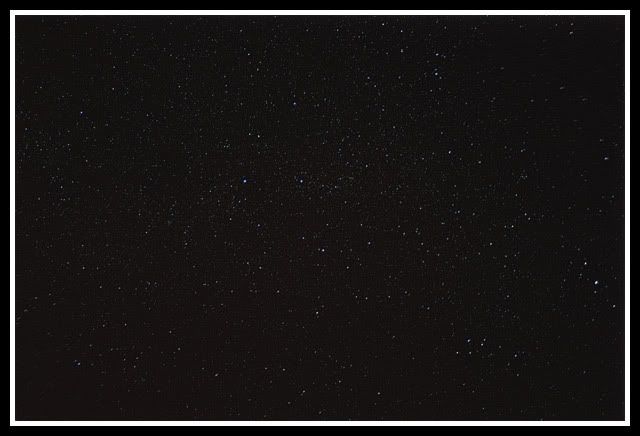A reasonable day, weather wise yesterday and a night, that's actually quite clear. Checked on HA and yes, we have a mag -6 flare forecast to pass just over Saturn and Mars. I got everything setup on the SatCatcher, but for some reason, I could not get the camera to focus. I thought I had 4 minutes longer than I did, and ended up, getting the focus about right, after the flare had passed. I'm a bit fed up about that. First time in a week, the sky has been clear to catch it and I missed it. I took a shot anyway showing the sunset with Saturn and Mars.
There were some odd clouds passing over, thin, quite high and looking like sand dunes in the night, so I took a picture of them.
About an hour later, I started setting up for the next flare. I was still having trouble with focusing as I'd left the lens on manual mode, and when I'd put the lens cap back on, had moved focus. It's gonna be one of those nights. I took a few test shots, and got the focus right. As I was shooting the last one, the flare appeared. Typical. Once the 6 second test shot had finished, I quickly set for 30 seconds and snapped again. I stacked the pair of images in DSS, and used Noels tools to remove the LP. It's not the best flare ever, and I might try adding the line back in, or maybe just keep it like this as a reminder to prepare earlier.
After this, I set the camera back up on the tripod, and using a feature I'd found in the manual, yes that's not something I normally do, the self timer can be set for 10 seconds, and take 10 exposures. I set about taking a bunch of frames of widefield views. Firstly the area around Arcturus. Something didn't quite go right during the stacking, there was some blurring along the edge of the shot, so the result has been cropped.
30 x 30 seconds
As the streelights out the front had now gone off, I transferred everything to the front of the house, this time taking my bins with me. I set up and started the same process with the self timer, pointing at the region of cygnus (I think). Whilst the camera was snapping away I had a look around the milky way with the bins and got totally lost in the starscapes unveiling before me. Serious wow factor. I also took a look at Jupiter, and I was quite surprised to make out the Galilean moons in the bins. After the third set of 10 frames, the clouds had shifted back in and only 28 of them were usable. These to were stacked in DSS and similar processing resulted in:
I then swapped lenses to the 55-250 and zoomed in on the mighty one. I took a series of shots, and this is the best
In order from left to right we have :
Callisto, Ganymede, Europa, Io, Jupiter and a guest appearance by HP 95077 (mag 5.5 star 186 LY away).
And then as I bought everything in and went to download the widefield shots, I realised once again that I'd forgottten to take any dark frames. Ah well, I'll get it right one of these nights.
Sunday, 29 June 2008
Flare, Stars and Planet
Subscribe to:
Post Comments (Atom)







No comments:
Post a Comment